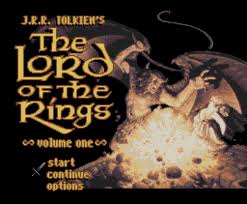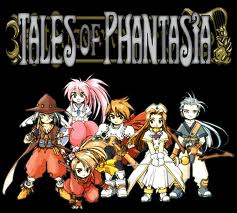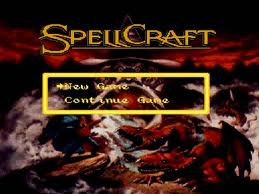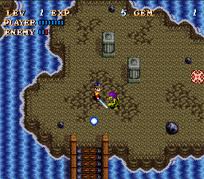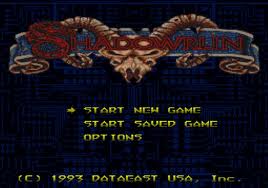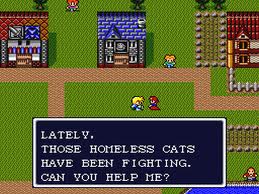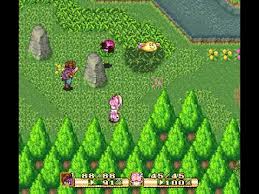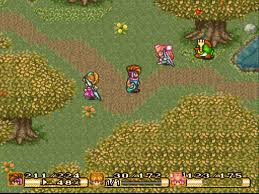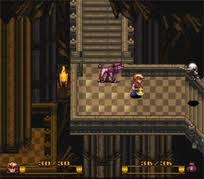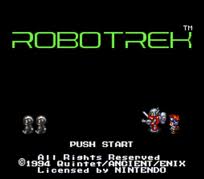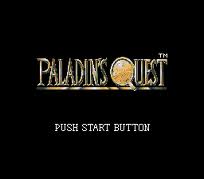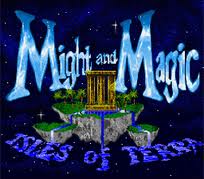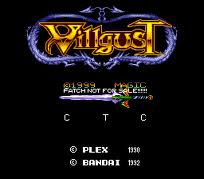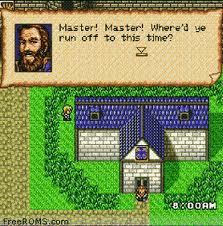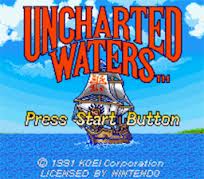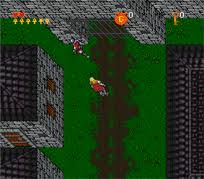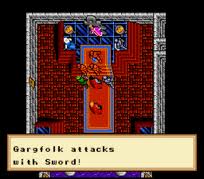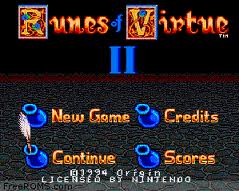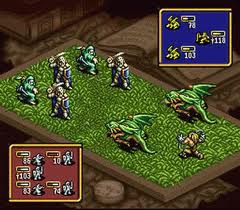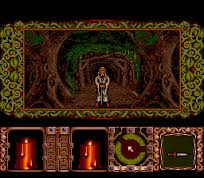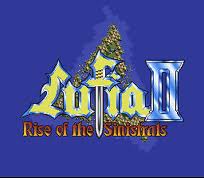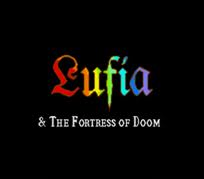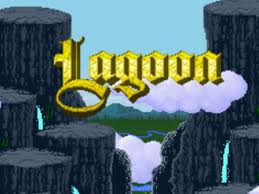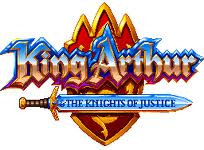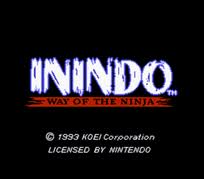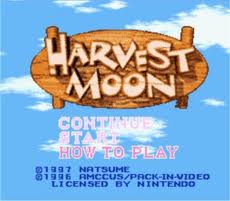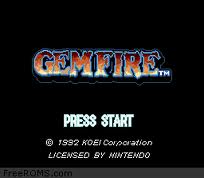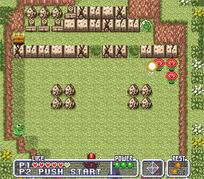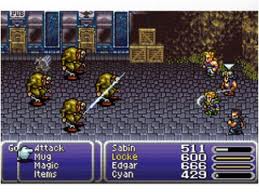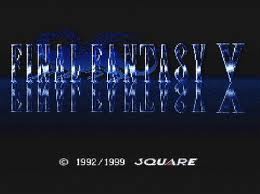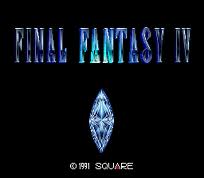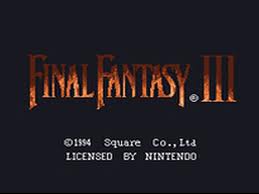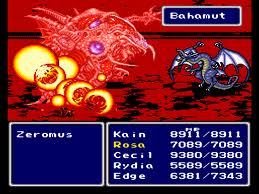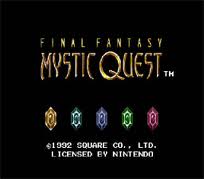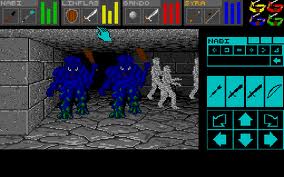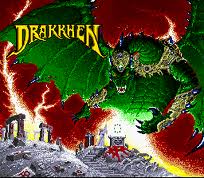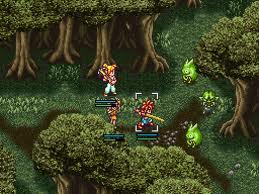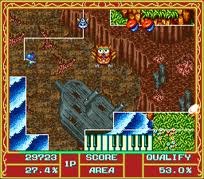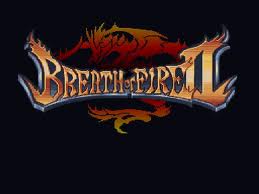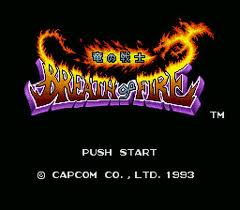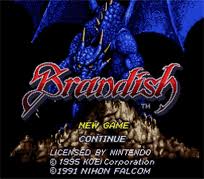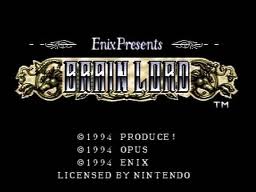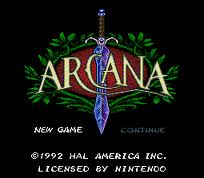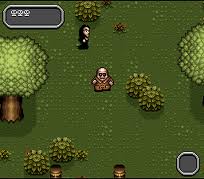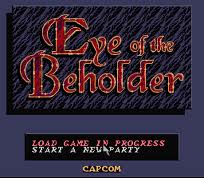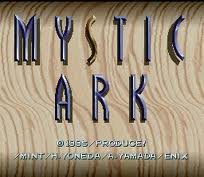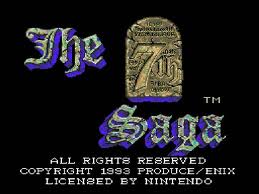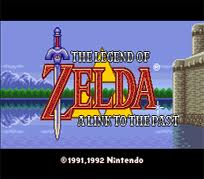Category: RPG
99 game(s)All RPG Games for SNES
The Lord of the Rings - Volume One
J.R.R. Tolkien's The Lord of the Rings, Vol. I is the name of a video game published by Interplay Productions for the Super Nintendo. It is an adaptation of The Fellowship of the Ring by J. R. R. Tolkien.
Tales of Phantasia
Tales of Phantasia (Japanese: テイルズ オブ ファンタジア, Hepburn: Teiruzu obu Fantajia?) is a role-playing video game originally developed by Telenet Japan's "Wolf Team" as the first title in Namco's Tales series. Initially released for the Japanese Super Famicom in December 1995, it was later ported to a number of other platforms including a Japan-exclusive version for the PlayStation in December 1998, and a Game Boy Advance version available in Japan in August 2003, followed by English releases in North America and Europe in March 2006. A PlayStation Portable remake known as Tales of Phantasia Full Voice Edition (テイルズ オブ ファンタジア-フルボイスエディション-, Teiruzu obu Fantajia -Furu Boisu Edishon-?) followed in September 2006 featuring full voice-acting during story scenes, which was later included with further enhancements as part of Tales of Phantasia: Narikiri Dungeon X in June 2010. The game's producers have given it the characteristic genre name Legendary RPG (伝説のRPG, Densetsu no RPG?) beginning with the PlayStation version, with the Full Voice Edition given the moniker Legendary RPG Embellished with Voices (声が彩る、伝説のRPG, Koe ga irodoru, densetsu no RPG?).
This game was originally developed by Wolf Team. It was written and programmed by Yoshiharu Gotanda, designed by Masaki Norimoto, and scored by Motoi Sakuraba and Shinji Tamura. The character designs were created by manga artist Kōsuke Fujishima. A short anime series based on the game, called Tales of Phantasia: The Animation, was released in 2004.
SpellCraft
Spellcraft: Aspects of Valor is a strategy game by the relatively unknown developer, Asciisoft.
Soul Blazer
Shadowrun
Shadowrun is a cyberpunk-fantasy action role-playing video game for the Super Nintendo Entertainment System (SNES), adapted from the tabletop role-playing game Shadowrun by FASA. The video game was developed by Australian company Beam Software and first released in 1993 by Data East.
The game is loosely based on the novel Never Deal with a Dragon by Shadowrun co-creator Robert N. Charrette and set in the year 2050. The player takes on the role of Jake Armitage, a man suffering from amnesia after having been critically wounded by assassins. The plot then follows Jake as he attempts to uncover his own identity and the identity of the mysterious figure who wants him dead, and eventually complete his mission. Harebrained Schemes' 2013 Shadowrun Returns links the stories of this game and of Shadowrun for the Sega Genesis.
A project to adapt Shadowrun for the SNES had a turbulent history between 1989 and 1993, including having been halted in mid-development before being resumed in late 1992 under a tight deadline. Its eventual lead designer was Paul Kidd, creator of Beam Software's 1992 Nightshade, elements and a feel of which he then carried on to Shadowrun. The game was a critical success, winning a number of industry awards, but was a commercial failure nevertheless. It was retrospectively acclaimed by several publications as an "ahead of its time" milestone in the history of the role-playing genre for the consoles and credited for having pioneered film noir style in video games.
Secret of the Stars
Secret of mana 2 - Seiken Densetsu 3
Seiken Densetsu 3 (聖剣伝説3?, lit. "Legend of the Sacred Sword 3") is a 1995 action role-playing game developed and published by Square (now Square Enix) for the Super Nintendo Entertainment System. It is the sequel to the 1993 game Seiken Densetsu 2 (released outside Japan as Secret of Mana), and is the third game in the Mana series. Set in a fantasy world, the game follows three heroes as they attempt to claim the legendary Mana Sword and prevent the Mana Beasts from being unleashed and destroying the world. The game features three lengthy main plotlines and six different possible main characters, each with their own storylines, and allows two players to play simultaneously. The game builds on the gameplay of its predecessor with multiple enhancements, including the use of a time progression system, with transitions from day to night and weekday to weekday in game time, and a wide range of character classes to choose from, which provides each character with an exclusive set of skills and status progression.
The game was designed by series creator Koichi Ishii, directed by veteran Square designer Hiromichi Tanaka, and produced by Tetsuhisa Tsuruzono. Artwork for the game was produced by manga and anime artist Nobuteru Yūki, while the game's music was composed by Secret of Mana composer Hiroki Kikuta. Although the game was only published in Japan, Western players have been able to play Seiken Densetsu 3 thanks to an unofficial English fan translation, first released in 2000. The game received considerable acclaim from reviewers, who praised the graphics as among the best ever made for the Super Nintendo and the gameplay as an improved version of its predecessor's. The plot received mixed reviews by critics who found the overlapping stories to be interesting and enhance replayability, but the characters and plotlines themselves to be flat and clichéd. Overall, the game is considered to be a Super Nintendo classic and one of the best role-playing games of the 16-bit era.
Secret of Mana
Secret of Mana, originally released in Japan as Seiken Densetsu 2 (聖剣伝説2?, lit. "Legend of the Sacred Sword 2"), is a 1993 action role-playing game developed and published by Square (now Square Enix) for the SNES. It is the sequel to the 1991 game Seiken Densetsu, released in North America as Final Fantasy Adventure and Europe as Mystic Quest, and its release marked the transition of the Seiken Densetsu series's marketing from a thinly-related spinoff of the Final Fantasy series to the wholly separate Mana series. Set in a fantasy world, the game follows three heroes as they attempt first to restore the legendary Mana Sword, then to prevent the Empire from releasing the Mana Fortress, and finally to prevent the ancient sorcerer Thanatos from destroying the Mana Tree and taking control of the world's magic.
Secret of Evermore
Secret of Evermore is a role-playing video game for the Super Nintendo Entertainment System. It was released by Square in North America on October 1, 1995. In February 1996, it saw release in the PAL territories of Europe and Australia. The story of Secret of Evermore follows a boy and his pet dog as they are inadvertently transported to a fantasy world created by an eccentric inventor. The player guides both the boy and his shapeshifting dog through Evermore, a world that is composed of separate realms, each resembling a different period of real-world history. The gameplay shares many similarities with Secret of Mana, such as real-time battles, a ring-shaped menu system, and the ability to switch control between the two characters. Despite similar game mechanics and a similar title, it is not an entry in the Mana Series.
Secret of Evermore is unique in that it is the only game developed by Square designers in North America. The game received positive reviews upon its release due to its graphics and gameplay, but was criticized for not being up to the standards of what many reviewers were used to by its developer.
Robotrek
Paladin's Quest
Might and Magic III: Isles of Terra
Might and Magic III: Isles of Terra is the third game in the role-playing video game series Might and Magic. Released in 1991, it is the predecessor to Might and Magic IV: Clouds of Xeen and the sequel to Might and Magic II: Gates to Another World.
Kōryū Densetsu Villgust
Kōryū Densetsu Villgust (甲竜伝説ヴィルガスト?, off. "Armed Dragon Fantasy Villgust") is an RPG that is only available in Japan for the Super Famicom. The object of the game is to rescue your girlfriend and to return to modern Japan from a parallel medieval world. The player controls five people as they fight apes and skeletons for experience points. There are lots of weapons to buy and players can only enter certain houses that have doors visibly on them.
It was adapted into a pair of anime OVA episodes in 1992–1993.
In 1993, a Kōryū Densetsu Villgust Gaiden was released for the Family Computer.
Uncharted Waters: New Horizons
Uncharted Waters, normally released as Daikoukai Jidai (大航海時代 Daikōkai Jidai?), is a popular Japanese video game series produced by Koei under its "Rekoeition" brand.
It is a simulation and role-playing video game series dealing with sailing and trading, themed around the Age of Discovery. In the games, the player takes up the role of a captain (or commodore in some translations) and manages a seagoing fleet to participate in trades, privateering, treasure hunting, exploration, and plain piracy. Even though the series is largely open-ended, there is still a loose plot which requires the player to follow certain paths, and deviating from these paths may stall the progress of the story.
In East Asia, the series has a large cult following, but it has not received much recognition outside the region. However, it has been compared to the earlier Sid Meier's Pirates! in gameplay and theme.
Uncharted Waters
Uncharted Waters, normally released as Daikoukai Jidai (大航海時代?), is a popular Japanese video game series produced by Koei under its "Rekoeition" brand.
It is a simulation and role-playing video game series dealing with sailing and trading, themed around the Age of Discovery. In the games, the player takes up the role of a captain (or commodore in some translations) and manages a seagoing fleet to participate in trades, privateering, treasure hunting, exploration, and plain piracy. Even though the series is largely open-ended, there is still a loose plot which requires the player to follow certain paths, and deviating from these paths may stall the progress of the story.
In East Asia, the series has a large cult following, but it has not received much recognition outside the region. However, it has been compared to the earlier Sid Meier's Pirates! in gameplay and theme.
Ultima VII: The Black Gate
Ultima VII: The Black Gate is the seventh installment of the Ultima series of role-playing video games, released on April 16th, 1992. The Black Gate was critically acclaimed and commercially successful, being widely lauded as a high point in the series and as one of the best RPGs ever created. In an interview with GameSpot, Richard Garriott stated that Ultima VII "was the most masterfully executed of the Ultima series." He has also often stated that the game was, along with Ultima IV, his own favorite installment overall.
Ultima VI: The False Prophet
Ultima VI: The False Prophet, released by Origin Systems in 1990, is the sixth part in the role-playing video game series of Ultima. It was the last in the "Age of Enlightenment" trilogy.
Ultima: Runes of Virtue II
Ultima: Runes of Virtue II was developed by Origin and published by FCI for the Nintendo GameBoy in 1993. A port for the SNES followed in 1994.
Like its predecessor, Runes of Virtue, this is mostly an action-adventure game similar to the Legend of Zelda and offers basically the same gameplay. The land is however much bigger this time, with actual cities to explore and more NPCs to see, and longer dungeons.
Like the first episode, this game is again capable of multi-player.
Ogre Battle: The March of the Black Queen
Ogre Battle: The March of the Black Queen (伝説のオウガバトル Densetsu no Ōga Batoru?, "Legendary Ogre Battle") is a 1993 real-time tactical role-playing video game directed by Yasumi Matsuno with artwork by Akihiko Yoshida. It is the first installment of an episodic series, and was originally developed by Quest. Originally released for the Super NES, it has since been released for the Sega Saturn, PlayStation, Virtual Console, and cell phones.
It was followed up by a sequel in 1995, Tactics Ogre: Let Us Cling Together.
Obitus
Lufia II: Rise of the Sinistrals
Lufia II: Rise of the Sinistrals, known as Estpolis Denki II (エストポリス伝記II?, officially translated Biography of Estpolis II[1]) in Japan, and as simply Lufia in Europe and Australia, is a role-playing video game game with puzzle elements developed by Neverland and published in Japan in 1995 by Taito, and in North America and Europe in 1996 by Natsume and Nintendo respectively, for the Super Nintendo video game console.
The game is a prequel to Lufia & the Fortress of Doom. It follows the story of the first main character's ancestor, Maxim, and explains the origins of the war between mankind and a group of gods called the Sinistrals. Lufia II made a number of changes from the first game. Dungeons no longer have random encounters and there are hundreds of puzzles throughout the game, ranging from simple to extremely challenging. It also introduced new skills, such as a variety of weapons that could be used to stun monsters or solve puzzles, and IP attacks. In 2009, Square Enix announced a re-imagining of the original game titled Lufia: Curse of the Sinistrals.
Lufia & the Fortress of Doom
Lufia & the Fortress of Doom, known as Estpolis Denki (エストポリス伝記?, officially translated Biography of Estpolis) in Japan, is a role-playing video game developed by Neverland and published by Taito in 1993, for the Super Nintendo. It is the first title in the Lufia series of video games and the only game from the series released under the Taito label in North America.
Lagoon
Lagoon (ラグーン?) is a top-view action/adventure video game for the Sharp X68000 and Super NES, in which Nasir (Nassel in the Japanese version), Champion of Light, must investigate the source of the world's corrupted water and return peace to Lakeland.
Lagoon is an action role-playing game with a fantasy setting, very similar to the early Ys games, combining real-time action gameplay with RPG elements such as experience levels and equipment management. The player travels through an assortment of towns, landscapes and dungeons while battling a variety of enemies ranging from insects to giant bosses, and gaining experience and items along the way.
King Arthur And The Knights Of Justice
King Arthur & the Knights of Justice is an action-adventure game developed by Manley & Associates and published by Enix for the Super Nintendo Entertainment System in May 1995. Based on the cartoon series of the same title, which was loosely inspired by the Arthurian legend, the game was released in North America exclusively.
The player takes on the role of a team of American football players who are transported to Medieval England and given the mission to save King Arthur from the evil sorceress Morgana and her army. The game was the first Enix title developed by an American company, and was inspired by The Legend of Zelda series and various written works. It was received with reviews ranging from mediocre to extremely poor.
Inindo : Way of the Ninja
Illusion of Gaia
Illusion of Gaia (ガイア幻想紀, Gaia Gensōki?, lit. "Records of the Illusion of Gaia"), known in Europe and Australia as Illusion of Time, is an action role-playing game that was released on September 1, 1994, for the Super NES. Developed by Quintet, Enix published the game in Japan, and Nintendo published it worldwide.
Illusion of Gaia was scored by Yasuhiro Kawasaki. Moto Hagio, the influential manga artist, is credited with the character designs. Novelist Mariko Ōhara worked on the story.
Harvest Moon
Harvest Moon (牧場物語 Bokujō Monogatari?) is a virtual role playing game for the Super Nintendo Entertainment System developed and published by Pack-In-Video (now Marvelous AQL), first released in Japan in 1996, and 1997 in North America. This is the first game in the long-running series of the same name. A PAL version was released by Nintendo in early 1998 for Western Europe and Oceania, with language localizations for Germany and France.
Gemfire
Gemfire (released in Japan as Royal Blood or ロイヤルブラッド Roiyaru Buraddo, Super Royal Blood or スーパーロイヤルブラッド Sūpā Roiyaru Buraddo in its Super Famicom version) is a medieval war game for the MSX, Nintendo Entertainment System, Super NES, FM Towns, Mega Drive/Genesis, MS-DOS, and later Windows, developed by Koei. The object in the game is to unify a fictional island by force. Players use soldiers and knights, as well as fantasy units such as magicians, dragons or gargoyles in order to capture the castle needed to control that particular territory.
A sequel, Royal Blood II, was released in the Japan market for Japanese Windows.
Firestriker
Firestriker (ホーリーストライカー?, lit. "Holy Striker") is an overhead view action video game that was released on December 17, 1993 in Japan and on October 1994 in North America exclusively for the Super Nintendo Entertainment System.
Final Fantasy VI
Final Fantasy VI (ファイナルファンタジーVI Fainaru Fantajī Shikkusu?) is a role-playing video game developed and published by Square (now Square Enix), released in 1994 for the SNES as a part of the Final Fantasy series. Set in a fantasy world with a technology level equivalent to that of the Second Industrial Revolution, the game's story focuses on a group of rebels as they seek to overthrow an imperial dictatorship. The game features fourteen permanent playable characters, the most of any game in the main series.
It was ported by Tose with minor differences to Sony's PlayStation in 1999 and Nintendo's Game Boy Advance in 2006, and it was released for the Wii's Virtual Console in Japan in March 15, 2011, followed by the PAL region on March 18, 2011 and North America on June 30, 2011. The game was known as Final Fantasy III when it was first released in North America, as the original Final Fantasy III had not been released outside of Japan at the time. However, most later localizations used the original title. Final Fantasy VI was the first game in the series to be directed by someone other than producer and series creator Hironobu Sakaguchi; the role was filled instead by Yoshinori Kitase and Hiroyuki Ito. Yoshitaka Amano, a long-time contributor to the Final Fantasy series, returned as the image and character designer, while regular composer Nobuo Uematsu wrote the game's score, which has been released on several soundtrack albums.
Released to critical acclaim, Final Fantasy VI was a landmark title for the role-playing genre and is often considered one of the greatest video games of all time. Its Super Nintendo and PlayStation versions have sold over 3.48 million copies worldwide to date as a stand-alone game, as well as over 750,000 copies as part of the Japanese Final Fantasy Collection and the North American Final Fantasy Anthology. Final Fantasy VI has won numerous awards since its release.
Final Fantasy V
Final Fantasy V (ファイナルファンタジーV Fainaru Fantajī Faibu?) is a medieval-fantasy role-playing video game developed and published by Square (now Square Enix) in 1992 as a part of the Final Fantasy series. The game first appeared only in Japan on Nintendo's Super Famicom (known internationally as the Super Nintendo Entertainment System). It has been ported with minor differences to Sony's PlayStation and Nintendo's Game Boy Advance. An original video animation produced in 1994 called Final Fantasy: Legend of the Crystals serves as a sequel to the events depicted in the game. It was released for the PlayStation Network on April 6, 2011 in Japan. An enhanced port of the game, with new high resolution graphics and touch-based interface, was released for iPhone and iPad on March 28, 2013 with Android released on September 25, 2013.
The game begins as a wanderer named Bartz investigates a fallen meteor. There, he encounters several characters, one of whom reveals the danger facing the four Crystals that control the world's elements. These Crystals act as a seal on Exdeath, an evil sorcerer. Bartz and his party must keep the Crystals from being exploited by Exdeath's influence and prevent his resurgence.
Final Fantasy V has been praised for the freedom of customization that the player has over the characters, achieved through the greatly expanded Job System. Despite being released only in Japan, the Super Famicom version sold more than two million copies. The PlayStation version has earned "Greatest Hits" status, selling more than 350,000 copies.
Final Fantasy IV
Final Fantasy IV (ファイナルファンタジーIV Fainaru Fantajī Fō?) is a role-playing video game developed and published by Square (now Square Enix) in 1991 as a part of the Final Fantasy series. The game was originally released for the Super Famicom in Japan and has since been rereleased for many other platforms with varying modifications. The game was re-titled Final Fantasy II during its initial release outside of Japan as the original Final Fantasy II and Final Fantasy III had not been released outside of Japan at the time. However, later localizations used the original title.
The game's story follows Cecil, a dark knight, as he tries to prevent the sorcerer Golbez from seizing powerful crystals and destroying the world. He is joined on this quest by a frequently changing group of allies. Final Fantasy IV introduced innovations that became staples of the Final Fantasy series and role-playing games in general. Its "Active Time Battle" system was used in five subsequent Final Fantasy games, and unlike prior games in the series, IV gave each character their own unchangeable character class.
With its character-driven plot, use of new technologies and critically acclaimed score by Nobuo Uematsu, Final Fantasy IV is regarded as a landmark of the series and the role-playing genre. The various incarnations of the game have sold more than four million copies worldwide. An enhanced remake, also called Final Fantasy IV, with 3D graphics was released for the Nintendo DS in 2007 and 2008. A sequel, Final Fantasy IV: The After Years, was released for Japanese mobile phones in 2008, and worldwide via the Wii Shop Channel on June 1, 2009. In 2011, both Final Fantasy IV and The After Years were released for the PlayStation Portable as part of the compilation Final Fantasy IV: The Complete Collection, which also included a new game, set between the two; Final Fantasy IV: Interlude. An iOS port of the Nintendo DS remake was released on December 20, 2012, as well as an Android version on June 4, 2013.
Final Fantasy III
Final Fantasy III (ファイナルファンタジーIII Fainaru Fantajī Surī?) is a role-playing video game developed and published by Square in 1990 for the Family Computer as the third installment in the Final Fantasy series. It is the first numbered Final Fantasy game to feature the job-change system.
The story revolves around four orphaned youths drawn to a crystal of light. The crystal grants them some of its power, and instructs them to go forth and restore balance to the world. Not knowing what to make of the crystal's pronouncements, but nonetheless recognizing the importance of its words, the four inform their adoptive families of their mission and set out to explore and bring back balance to the world.
The game was originally released in Japan on April 27, 1990. It had never been released outside of Japan until a remake was released on the Nintendo DS on August 24, 2006. At that time, it was the only Final Fantasy game not previously released in North America or Europe. There had been earlier plans to remake the game for Bandai's WonderSwan Color handheld, as had been done with the first, second, and fourth installments of the series, but the game faced several delays and was eventually canceled after the premature cancellation of the platform. The Nintendo DS version of the game was positively received internationally, selling over one million copies in Japan.
It was also released for the many other systems: the Japanese Virtual Console version (Famicom version) on July 21, 2009 (Wii) and January 8, 2014 (Wii U), an iOS port of the Nintendo DS remake on March 24, 2011, an Android version on March 12, 2012, a PlayStation Portable version on late September 2012 (Downloadable only version outside of Japan via PlayStation Network) and Android-based Ouya console on April 11, 2013.
Final Fantasy 2
Final Fantasy Mystic Quest
Final Fantasy Mystic Quest, released as Mystic Quest Legend in PAL regions and as Final Fantasy USA: Mystic Quest (ファイナルファンタジーUSA ミスティッククエスト Fainaru Fantajī Yū Esu Ē Misutikku Kuesuto?) in Japan, is a role-playing video game for the Super Nintendo Entertainment System. The game was released as a spin-off to Square's popular Final Fantasy series of video games. Final Fantasy Mystic Quest was first released in North America in 1992 and marketed as a "simplified role-playing game...designed for the entry-level player"[1] in an attempt to broaden the genre's appeal.[2] The game's presentation and battle system is broadly similar to that of the main series, but it differed in its inclusion of action-adventure game elements. Along with Final Fantasy Adventure, Final Fantasy Mystic Quest was the first Final Fantasy game to be released in Europe.
In the game, the player controls a youth named Benjamin in his quest to save the world. His goal is to reclaim a set of stolen crystals that determine the state of the world's four elemental powers. The gameplay takes a departure from the main series in a variety of ways. Many series staples are eliminated, such as random battles, save points, manual equipment, and the party system. The game received middling reviews and sales in North America and Japan, citing its simplified gameplay and lack of depth in the game's story. Over time, the game has kept the reputation for being a "beginner's Final Fantasy", but has been praised for its music.
Dungeon Master
In the Dungeons & Dragons (D&D) role-playing game, the Dungeon Master (often abbreviated as DM) is the game organizer and participant in charge of creating the details and challenges of a given adventure, while maintaining a realistic continuity of events. In effect, the Dungeon Master controls all aspects of the game, except for the actions of the player characters, (PCs) and describes to the other players what they see and hear.
The title was invented for the TSR Dungeons & Dragons RPG, and was introduced in the second supplement to the game rules (Blackmoor). To avoid infringement of TSR's trademarks, and to describe referees in role-playing genres other than sword and sorcery, other gaming companies use more generic, terms, like Game Master, Game Operations Director, Judge, Referee or Storyteller, with some using more esoteric titles related to the genre or style of the game, such as Keeper of Arcane Lore, or even completely surreal titles such as Hollyhock God.
Also, in Faiths and Pantheons, the Faerunian Overgod Ao answers to a superior entity, insinuated to be the "Dungeon Master".
Drakkhen
Drakkhen is a 3D role-playing video game which was initially developed for the Amiga and Atari ST, and subsequently ported to several other platforms, including MS-DOS and the Super Nintendo Entertainment System.
Originally released by Infogrames in 1989, it was later modified for North American release by Draconian, a label from Data East, in 1990. Drakkhen was ported in 1991 to the Super Nintendo by Kemco-Seika, who made further revisions to the game.
Drakkhen was notable for being among the first role-playing games to feature a three-dimensional playing field. It did not employ a fully 3D game engine, instead implementing a hybrid approach using vectors and bitmapped character-scaling algorithms. Drakkhen features an animated day-night cycle, and the ability to wander freely about the game world, both rarities for a game of its era.
The game spawned a sequel, Dragon View, for the SNES.
Chrono Trigger
Chrono Trigger (Japanese: クロノ・トリガー, Hepburn: Kurono Torigā?) is a role-playing video game developed and published by Square (now Square Enix) for the Super Nintendo Entertainment System in 1995. Chrono Trigger's development team included three designers that Square dubbed the "Dream Team": Hironobu Sakaguchi, the creator of Square's Final Fantasy series; Yuji Horii, a freelance designer and creator of Enix's popular Dragon Quest series; and Akira Toriyama, a freelance manga artist famed for his work with Dragon Quest and Dragon Ball. Kazuhiko Aoki produced the game, Masato Kato wrote most of the plot, while composer Yasunori Mitsuda scored most of the game before falling ill and deferring remaining tracks to Final Fantasy composer Nobuo Uematsu. The game's story follows a group of adventurers who travel through time to prevent a global catastrophe.
Square re-released a ported version by Tose in Japan for Sony's PlayStation in 1999, later repackaged with a Final Fantasy IV port as Final Fantasy Chronicles in 2001 for the North American market. A slightly enhanced Chrono Trigger was released for the Nintendo DS on November 25, 2008, in North America and Japan, and went on sale in Australia on February 3, 2009 and in Europe on February 6, 2009. The game was never released in PAL territories before the Nintendo DS version.
Chrono Trigger was a critical and commercial success upon release and is considered today to be one of the greatest video games of all time. Nintendo Power magazine described aspects of Chrono Trigger as revolutionary, including its multiple endings, plot-related sidequests focusing on character development, unique battle system, and detailed graphics. Chrono Trigger was the third best-selling game of 1995, and the game's SNES and PlayStation iterations have shipped 2.65 million copies as of March 2003. The version for the Nintendo DS sold 790,000 copies as of March 2009. Chrono Trigger was also ported to mobile phones, Virtual Console, the PlayStation Network, iOS devices, and Android devices.
Cacoma Knight
Breath of Fire 2
Breath of Fire II (Japanese: ブレス オブ ファイアII 使命の子 Hepburn: Buresu obu Faia Tsū: Shimei no Ko?, Breath of Fire II: The Destined Child) is a role-playing video game developed and published by Capcom. First released in 1994, the game was licensed to Laguna for European release in 1996. It is the second entry in the Breath of Fire series. It was later ported to Game Boy Advance and re-released worldwide. The game has been rated by the ESRB for release on Wii's Virtual Console and was released in North America on August 27, 2007. Nintendo of Europe's website mistakenly announced it for release on July 27, 2007, but it was in fact released two weeks later, on August 10, 2007.
Unlike later installments in the series, Breath of Fire II is a direct sequel to Breath of Fire. Set 500 years after the original game,[1] the story centers on an orphan named Ryu Bateson, whose family vanished mysteriously long ago. After his friend is falsely accused of a crime, Ryu embarks on a journey to clear his name.
Breath of Fire
Breath of Fire (Japanese: ブレスオブファイア, Hepburn: Buresu obu Faia?) is a role-playing video game series developed by Capcom. It originated on the Super Nintendo Entertainment System in 1993. The series is notable for its recurring characters and ambiguous continuity; though each game is its own self-contained story, the names of the two lead characters are, invariably, Ryu and Nina.
The story commonly involves an adventurer named Ryu who can shapeshift into different types of dragons. Over the course of his journey, he befriends Nina, a girl with wings. At its inception, Breath of Fire took place in a medieval fantasy style fictional world. Following the mainstream success of Japanese role-playing games in the 1990s, the series began using the original anime-style artwork for later Western releases of the games (rather than the Westernized art that was drawn specifically for the Western releases of the first two games), post-apocalyptic themes, and an increased emphasis on character development. Despite these changes, the core structure of Breath of Fire remains largely linear and plot-focused. As of 2003, five Breath of Fire titles have been released, with three games being ported to handheld game consoles as well as Nintendo's Virtual Console. To date, the series has sold over 3 million units worldwide.
Brandish
Brandish (ブランディッシュ?) is an action role-playing video game by Nihon Falcom. Originally released in 1991 for the NEC PC-9801 and FM Towns, it was later ported to the Super Nintendo Entertainment System (SNES) and PC Engine CD-ROM² (TurboGrafx-CD) in 1994-1995, including an expanded re-release titled Brandish Renewal. The only English language version of the game is the SNES version, which was published by Koei in Japan in 1994 and in North America in 1995.
Brandish was the first title in Nihon Falcom's series of the same name. It was followed by three sequels: Brandish 2: The Planet Buster, Brandish 3: Spirit of Balcan, and Brandish VT / Brandish 4, originally released between 1991 and 1996.
A complete remake of the original Brandish featuring 3D graphics was released for the PlayStation Portable in 2009, titled Brandish: The Dark Revenant (ブランディッシュ~ダークレヴナント~?).
Brain Lord
Arcana
Arcana, originally released as Card Master: Rimsalia no Fuuin (カードマスター リムサリアの封印?), is a 1992 RPG for the SNES by HAL Laboratory.
The game represents all of its characters as cards, but plays like a dungeon-crawling RPG, rather than a card-based game. In keeping with this metaphor, the death of a character results in a 'torn' card, and the magical properties of some cards are used to explain abilities of the game's characters.
Addams Family Values
Addams Family Values is an Action RPG based on the film of the same name produced by Ocean Software and released in 1995 for the Sega Mega Drive and Super NES.
AD&D - Eye of the Beholder
Eye of the Beholder is a role-playing video game for computers and video game consoles developed by Westwood Studios. It was published by Strategic Simulations, Inc. in 1991 [1][2] for the MS-DOS operating system and later ported to the Amiga, the Sega CD, Game Boy Advance and the SNES. The Sega CD version features an exclusive soundtrack composed by Yuzo Koshiro.[3] A port to the Atari Lynx handheld was developed by NuFX in 1993, but never officially released.
The game had two sequels, Eye of the Beholder II: The Legend of Darkmoon, released in 1991, and Eye of the Beholder III: Assault on Myth Drannor, released in 1993. The third game, however, was not written by Westwood, who had been acquired by Virgin Interactive in 1992 and created the Lands of Lore series instead.
7th Saga 2 - Mystic Ark
Mystic Ark (ミスティックアーク Misutikku Āku) is a 1995 role-playing video game developed by Produce and published by Enix for the Super Famicom. The video game was only released in Japan. Mystic Ark has strong similarities to the games The 7th Saga and Brain Lord, also developed by Produce and distributed by Enix. The game was being localized for a North American release under the title 7th Saga II, but the release was cancelled.
7th Saga
The 7th Saga, called Elnard (エルナード?) in Japan, is a role-playing video game for the Super Nintendo Entertainment System. The player chooses one of seven playable characters, all of whom separately embark on a quest to locate seven magical runes. As the player progresses through the game from one town to the next, they encounter the other six characters on multiple occasions. The player may partner with one of the other playable characters to fight as a team, and they may also fight against other playable characters for the runes.
Notable unique innovations include the use of a crystal ball "radar" that allows players to see enemies approaching their character in dungeons and in the overworld. This means that combat is not totally random, as players may theoretically avoid enemies (although enemies move extremely quickly and randomly, making combat difficult to avoid). The game also uses Mode 7 graphic effects to create the transition between exploration screen and battle screen.
The game is particularly known for its unforgiving difficulty due to balance changes made in its localization; enemies were given much higher stats, and the player character's stat increases were reduced (the other playable characters retain the original stat increases, so they will always surpass the player character's level).
The Legend of Zelda - A Link to The Past
The Legend of Zelda: A Link to the Past, known as Zelda no Densetsu: Kamigami no Triforce (ゼルダの伝説 神々のトライフォース Zeruda no Densetsu: Kamigami no Toraifōsu?, lit. "The Legend of Zelda: The Triforce of the Gods") in Japan, is a 2D action-adventure video game developed and published by Nintendo for the Super Nintendo Entertainment System video game console. It is the third installment in The Legend of Zelda series and was released in 1991 in Japan and 1992 in North America and Europe. Shigeru Miyamoto and his team were solely responsible for this game's development.
The plot of A Link to the Past focuses on Link as he travels on a journey to save Hyrule, defeat Ganon and rescue the seven descendants of the Sages. A Link to the Past uses a 3/4 top-down perspective similar to that of the original The Legend of Zelda, dropping the side scrolling elements of Zelda II: The Adventure of Link. A Link to the Past introduced elements to the series that are still commonplace today, such as the concept of an alternate or parallel world, the Master Sword and other new weapons and items.
Released to critical and commercial success, A Link to the Past was a landmark title for Nintendo and is widely considered today to be one of the greatest video games of all time. A Link to the Past has sold over 4 million units world wide and has been ported to both the Game Boy Advance (with slight changes) and the Virtual Console for the Wii and Wii U. These ports were very popular and contributed to the overall success of the game.
